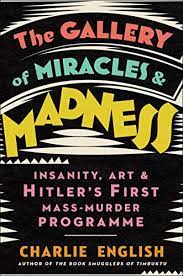Charles Darwent at Literary Review:
 In 1908, Paul Klee, struggling as a painter, saw his first van Gogh canvas at a gallery in Munich. The Dutchman’s genius was at once clear to him; so, too, and inseparably, was his madness. ‘Pathetic to the point of being pathological,’ Klee wrote, ‘this endangered man’ has a brain ‘consumed by the fire of a star’. Three years later, and shortly before joining them himself, Klee reviewed a show of works produced by the Blaue Reiter group. Once again, it was the irrational that drew his eye. ‘Neither childish behaviour nor madness are insulting words here, as they commonly are,’ Klee enthused. ‘All this is to be taken very seriously, more seriously than all the public galleries, when it comes to reforming today’s art.’
In 1908, Paul Klee, struggling as a painter, saw his first van Gogh canvas at a gallery in Munich. The Dutchman’s genius was at once clear to him; so, too, and inseparably, was his madness. ‘Pathetic to the point of being pathological,’ Klee wrote, ‘this endangered man’ has a brain ‘consumed by the fire of a star’. Three years later, and shortly before joining them himself, Klee reviewed a show of works produced by the Blaue Reiter group. Once again, it was the irrational that drew his eye. ‘Neither childish behaviour nor madness are insulting words here, as they commonly are,’ Klee enthused. ‘All this is to be taken very seriously, more seriously than all the public galleries, when it comes to reforming today’s art.’
A decade later, the polymath Oskar Schlemmer, shortly to take up a teaching post at the new Bauhaus in Weimar, went to a slide show of images of the art of the insane. What he saw in Stuttgart that night stirred him to ecstasy.
more here.
